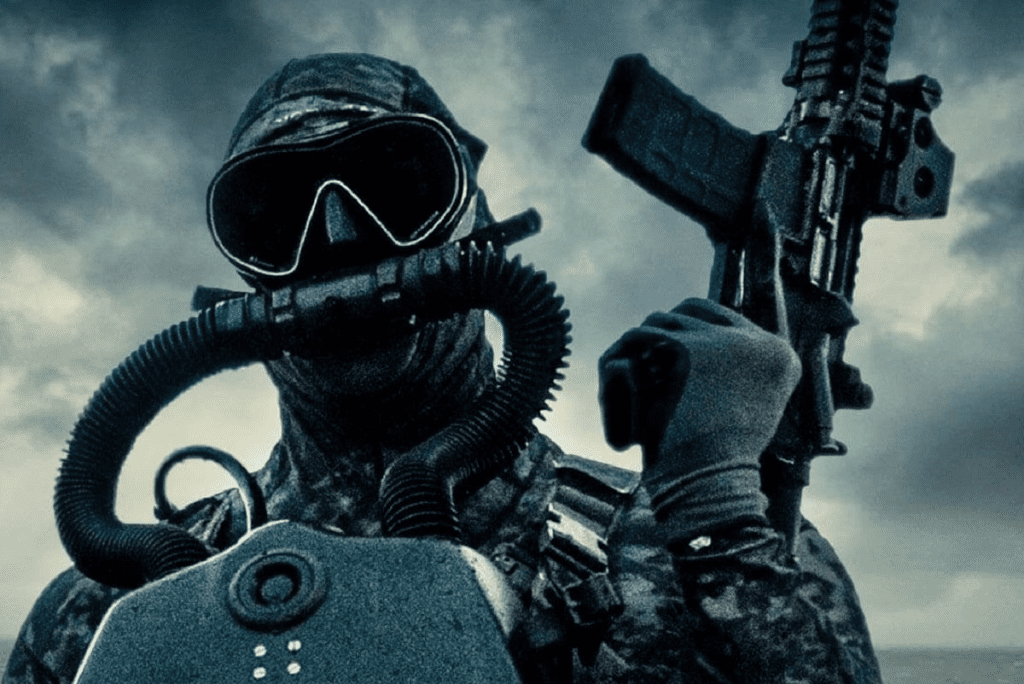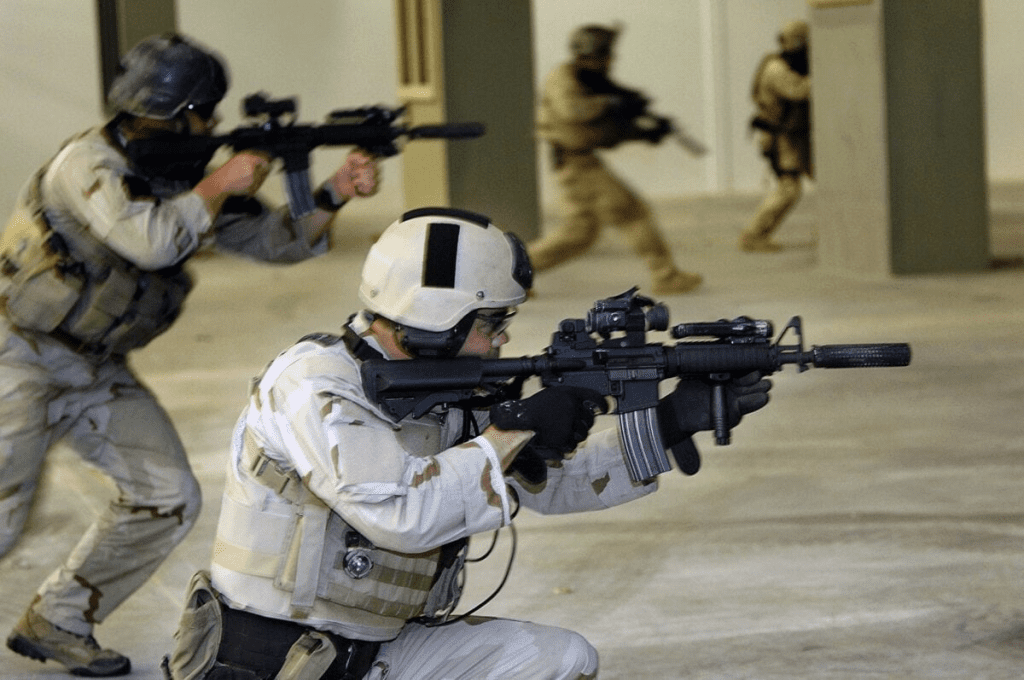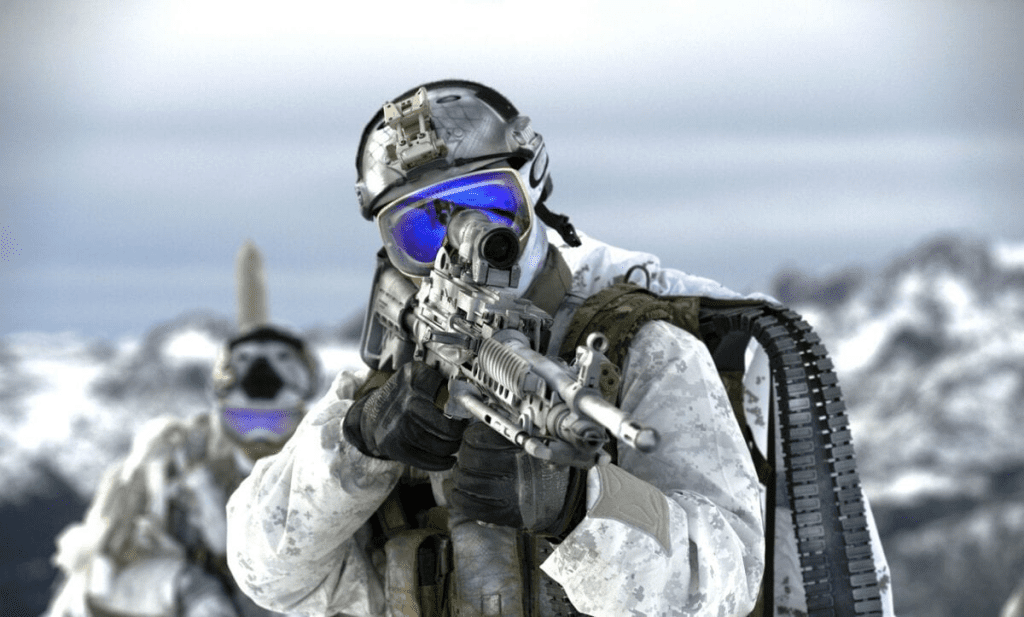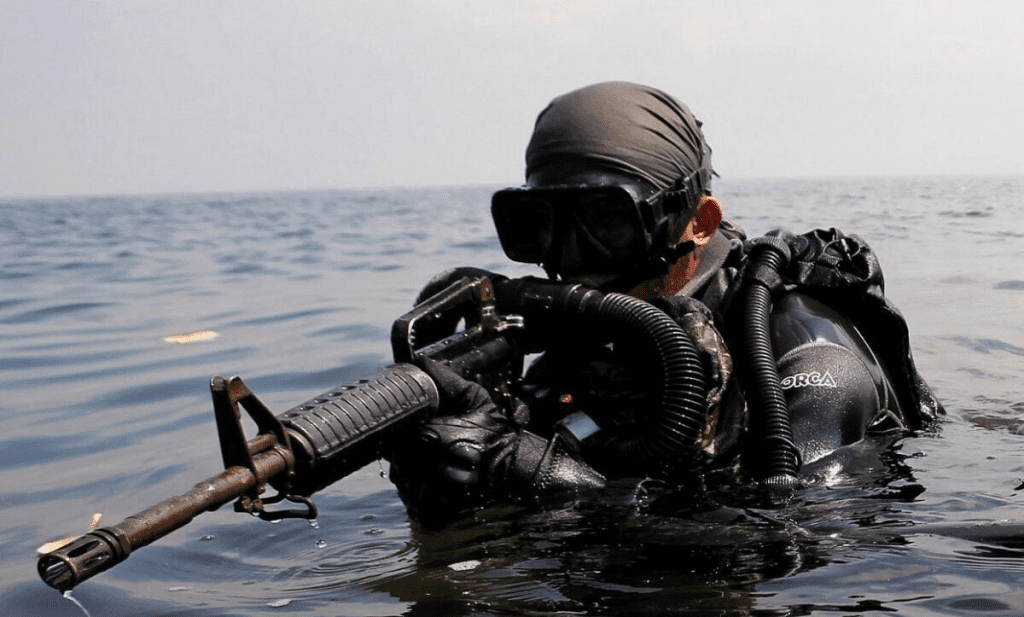
Key Points: The U.S. Navy’s SEAL Delivery Vehicle (SDV) Teams specialize in covert underwater operations using mini-submarines like the Mark 8 and the advanced Mark 11 Shallow Water Combat Submersible (SWCS).
-Inspired by World War II Italian frogmen, SDVs are critical for clandestine missions, including reconnaissance, sabotage, and deploying SEAL operators near enemy territory.
-With new platforms like the Dry Combat Submersible (DCS), SDVs are increasingly relevant in countering China’s maritime ambitions.
-While challenging to operate and often unpopular within the SEAL community, SDVs provide a unique and strategic capability that supports the U.S. military’s emphasis on dominance in the Pacific.
SEAL Delivery Vehicles: The Navy’s Stealth Underwater Warriors
The Navy SEAL community is arguably the best-known special operations organization in the U.S. military – if not the world. But there is a smaller community within the SEAL Teams you may have never heard of that specializes in some old-school commando-style missions: the SEAL Delivery Vehicle (SDV) Teams.
Inspired by the Italian frogmen of World War II, who sunk or damaged several Allied ships in daring special operations, the SEAL Delivery Vehicle Teams operate a fleet of mini-submarines that can strike or carry special operators clandestinely behind enemy lines.
A unique capability
Although not a primary mission-set, SDVs can also support Naval Special Warfare Development Group, the Tier 1 SEAL Team that specializes in counterterrorism and hostage rescue, in maritime counterterrorism scenarios by clandestinely transporting assaulters close to a target. That unit is more commonly known among those outside the SEAL community as SEAL Team 6.
SDV Teams offer a niche but highly valuable capability to commanders. As competition with China heats up and tensions with Russia continue to increase, the SDVs are becoming increasingly valuable at both tactical and strategic levels.
In the event of a conflict with China, for example, SDV Teams could transport SEAL operators close to enemy harbors or to other strategic targets, such as the Anti-Access/Area Denial (A2/AD) batteries that can prevent U.S. Navy aircraft carriers from getting within range. Also, SDVs could unilaterally attack enemy warships in harbor by placing limpet mines on ships or detonating other devices that would block the entrance and stop or stall traffic. Finally, SDVs could operate close to enemy shores, emplace sensors, and reconnoiter before sending vital intelligence back to headquarters to inform commanders.

“SDVs aren’t sexy. They are uncomfortable and a lot of work, but they fill a critical and unique capability. The guys that do get to work with the SDVs are a strategic national asset,” a former Navy SEAL operator told Sandboxx News.
SDVs have two crew members: a pilot and a navigator. Traditionally, the pilot has been an enlisted operator, while the navigator is an officer. But the roles aren’t set in stone and depend on both manpower and skill.
Becoming an SDV SEAL, however, isn’t easy or (one might argue) even desirable.
After a Sailor has finished the SEAL pipeline, which is composed of the Basic Underwater Demolition/SEAL (BUD/S) training and the SEAL Qualification Training (SQT) course, and has earned the SEAL Trident, he (or in the future, she) gets assigned to a SEAL Team.
There are nine active-duty regular SEAL Teams, two SEAL Delivery Vehicle Teams, and three Special Boat Teams. The units are divided between the West and East Coasts. There is an additional Tier 1 SEAL Team, the DEVGRU, previously and colloquially known as SEAL Team 6, that recruits the best SEALs from the other teams and specializes in hostage rescue and counterterrorism operations.
“Most Team guys actively try to avoid getting assigned to an SDV Team. Believe it or not, SEALs don’t really like the water, despite the fact that we’re America’s dedicated underwater special operations force,” the former Navy SEAL told Sandboxx News.
“When you’ve spent so much time being cold and miserable in BUD/S [Basic Underwater Demolition/SEAL training], the last thing you want is spending eight plus hours in a wet coffin [at] the bottom of the cold ocean.”
If a newly minted SEAL is selected or volunteers for SDV duty, he has to go through additional training, namely the SEAL Delivery Vehicle School, before he gets to his team. And often, SEALs will receive additional training, called Advanced Operator Training (AOT), once they arrive on the team. That’s another reason for the unpopularity of SDV teams within the SEAL community. By the time a new SEAL has finished with all of his SDV training and is fully qualified, a classmate of his from BUD/S would be finishing his first platoon or beginning his second.

Although a minority, some SEALs prefer the SDVs and volunteer for duty in one of the Teams. As with all military assignments, SEALs rotate through units throughout their careers, and though an operator might begin his journey in an SDV team, he might end it in a regular SEAL team.
“[Guys] also think getting shipped to an SDV Team means fewer opportunities to deploy in an operational role and see some action’s really what we signed up for. That’s not very accurate. Take the Red Wings guys, for example, they were SDV SEALs but deployed to Afghanistan and were conducting a special reconnaissance mission when it happened. But truth be told, that was another age, where everyone and their mom saw combat,” the former SEAL told Sandboxx News.
“Today, opportunities to see combat outside the tier 1 level [Naval Special Warfare Development Group] are very few, and, in a perverse twist of roles, SDVs are the place to be right now because of the attention to China in the Pacific,” he added.
At the headquarters of SEAL Delivery Vehicle Team Two, there is a plaque hanging with a simple question: Are you just a SEAL or are you an SDV SEAL?
The U.S. military first used submersibles for special operations with the Office of Strategic Services (OSS), the predecessor of the CIA and the Army Green Berets, during World War II. OSS’s maritime branch had a primitive submersible capability in the form of underwater canoes. The British had developed more advanced technology, which the OSS was able to study and pave the road for the modern-day SDVs.
The workhorse of the SDV Teams today is the Mark 8 SEAL Delivery Vehicle. However, the days of the aging Mark 8s are almost over, with the Mark 11 Shallow Water Combat Submersible (SWCS) currently going through final operational trials.
The future of the Naval Special Warfare’s SDV capability is focused on two submersible platforms: The Mark 11 (SWCS) and the Dry Combat Submersible (DCS).
The Mark 11 comes with several upgrades over its Mark 8 predecessor, including increased operational range, more advanced sensors, better navigation systems, a new command-and-control structure that allows for the easy integration of new technologies, and an increased payload. It is approximately 23 feet long and is designed to carry two crew members, a pilot, and navigator, along with a four-person combat diver team.

Both the Mark 8 and Mark 11 are flooded, meaning that the combat swimmers are exposed to the water, using the vehicle’s compressed air supply to breathe during the transit and shifting to their Drager breathing apparatuses once close to the target.
At 40 feet, the DCS is almost twice the size of the SWCS and also four times heavier. But the increased size and weight come with a much longer operational range and payload, in addition to being more comfortable for the operators. While comfort may not sound essential, it becomes imperative when SEALs have to accomplish their mission after an eight-hour-plus dive. The DCS can hold two crew members and eight combat divers, twice that of the Mark 11.
SDVs are quiet, hard to detect, and clandestine, making them the perfect chariot for covert and clandestine special operations. They can be launched from the water (both via surface ships and submarines), from land, and even from the air via helicopter. The most optimal launch method for stealth is underwater via a submarine’s Dry Dock Shelter (DDS), which is attached to the top of a submarine.
However, SDVs aren’t a magic bullet for getting operators ashore without arousing suspicion. They’re limited by their low speed and short operational range and can be affected by environmental factors, such as water temperature and sea conditions.
The U.S. Special Operations Command (SOCOM) is placing increasing emphasis on the SDV capability. In 2019, Naval Special Warfare Command reactivated SEAL Vehicle Delivery Team Two (SDVT-2) in Little Creek, Virginia. SDVT-2 is the dedicated East Coast SDV team, while SEAL Delivery Team One (SDVT-1), based in Hawaii, is responsible for the West Coast. The SDV teams were first activated in the early 1980s.


